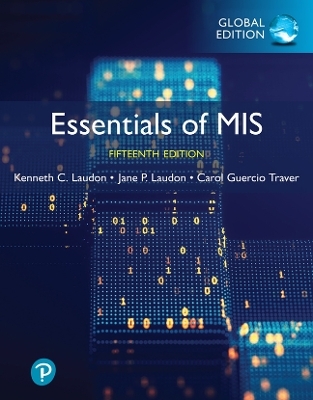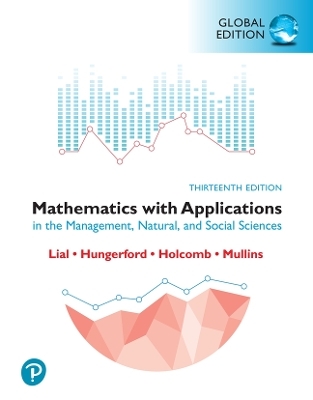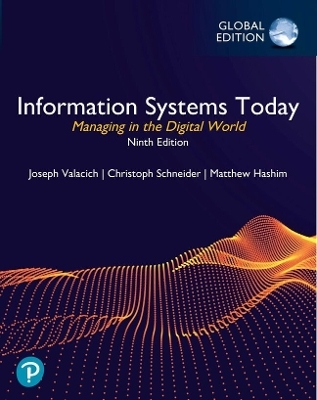
Business Driven Technology with MISource 2007 and Student CD
McGraw-Hill Professional
978-0-07-128624-4 (ISBN)
- Titel ist leider vergriffen;
keine Neuauflage - Artikel merken
BDT takes a business-first approach, starting each chapter by explaining the value of a business initiative and then detailing the technology that enables the initiative. This revolutionary approach instantly demonstrates the ‘why’ to business students without boring them with the ‘how’. The adaptive chapter/plug-in organization allows the instructor to adjust content according to their business or technical preferences.
Stephen Haag is the Associate Dean of Graduate Programs and Director of the MBA program in the Daniels College of Business at the University of Denver. Prior to being Associate Dean, Stephen served as Chair of the Department of Information Technology and Electronic Commerce in the Daniels College of Business at the University of Denver. Stephen holds a B.B.A. and M.B.A. from West Texas State University and a Ph.D. from the University of Texas at Arlington. Stephen has been teaching in the classroom since 1982 and publishing books since 1984.Stephen is the coauthor of numerous books including "Interactions: Teaching English as a Second Language" (with his mother and father), "Information Technology: Tomorrow's Advantage Today" (with Peter Keen), "Excelling in Finance," and more than 40 books within the "I-Series." He has also written numberous articles appearing in such journals as Communications of the ACM, Soio-Economic Planning Siences, the International Journal of Systems Science, Managerial and Decision Economics, Applied Economics, and the Australian Journal of Management. Paige Baltzan teaches in the Department of Information Technology and Electronic Commerce at the Daniels College of Business at the University of Denver. She holds a B.S.B.A. specializing in Accounting/MIS from Bowling Green State University and an M.B.A. specializing in MIS from the University of Denver. Paige also teaches online at Strayer University. She is the coauthor of several books, including Business Driven Technology, Essentials of Business Driven Information Systems, I-Series, and a contributor to Management Information Systems for the Information Age. Before joining the Daniels College faculty in 1999, Paige spent several years working for a large telecommunications company and an international consulting firm where she participated in client engagements in the United States, as well as South America and Europe. Paige lives in Lakewood, Colorado, with her husband, Tony, and daughters, Hannah and Sophie. Amy Philips is Professor of Information Systems at Pittsburgh State University. She holds a B.S. in Mathematics and Computer Science and an M.B.A from Pittsburg State and a Ph.D. in Information Systems from the University of Texas at Arlington. She has published in various journals including the Journal of Global Information Management and the Journal of Computer Information Systems. She serves on various editorial boards and is a coauthor of Case Studies in Information Technology and the concepts books of the I-Series, entitled Computing Concepts. Maeve has been teaching for 20 years and lives in Pittsburg, Kansas, with her husband, Slim.
Unit 1 Chapter 1: Business Driven Technology Chapter 2: Identifying Competitive Advantages Chapter 3: Strategic Initiatives for Implementing Competitive Advantages Chapter 4: Measuring the Success of Strategic Initiatives Chapter 5: Organizational Structures that Support Strategic Initiatives Unit 2 Chapter 6: Valuing Organizational Information Chapter 7: Storing Organizational Information – Databases Chapter 8: Accessing Organizational Information – Data Warehouse Unit 3 Chapter 9: Enabling the Organization – Decision Making Chapter 10: Extending the Organization – Supply Chain Management Chapter 11: Building a Customer-Centric Organization –CRM Chapter 12: Integrating the Organization from End-to-End – ERP Unit 4 Chapter 13: Creating Innovative Organizations Chapter 14: E-Business Chapter 15: Creating Collaborative Partnerships Chapter 16: Integrating Wireless Technology in Business Unit 5 Chapter 17: Building Software to Support an Agile Organization Chapter 18: Outsourcing in the 21st Century Chapter 19: Developing a 21st Century Organization
| Erscheint lt. Verlag | 16.12.2006 |
|---|---|
| Sprache | englisch |
| Maße | 203 x 254 mm |
| Gewicht | 1356 g |
| Themenwelt | Mathematik / Informatik ► Informatik |
| Mathematik / Informatik ► Mathematik ► Finanz- / Wirtschaftsmathematik | |
| ISBN-10 | 0-07-128624-1 / 0071286241 |
| ISBN-13 | 978-0-07-128624-4 / 9780071286244 |
| Zustand | Neuware |
| Haben Sie eine Frage zum Produkt? |
aus dem Bereich


